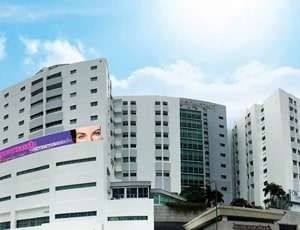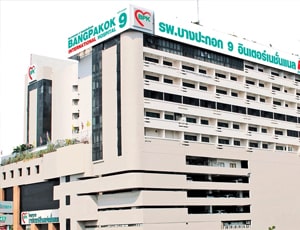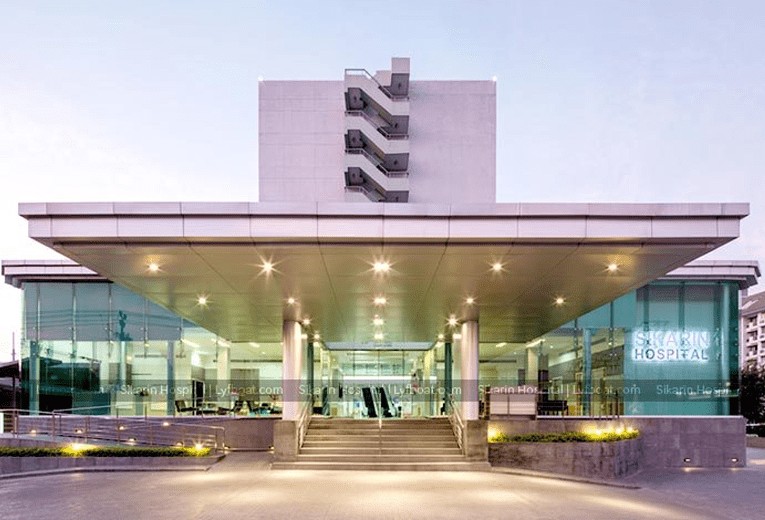The average cost of Stroke Treatment in Bangkok approximately starts from USD 6000
Treatment cost

Types of Stroke Treatment in Kasemrad Ramkhamhaeng Hospital and its associated cost
| Treatment Option | Approximate Cost Range (USD) | Approximate Cost Range (THB) |
|---|---|---|
| Stroke Treatment (Overall) | 3931 - 15800 | 136383 - 555187 |
| Intravenous Thrombolysis | 3286 - 6332 | 115184 - 233605 |
| Mechanical Thrombectomy | 6591 - 12977 | 230074 - 467659 |
| Carotid Endarterectomy | 4528 - 10128 | 161530 - 365617 |
| Angioplasty and Stenting | 4285 - 11190 | 155953 - 390670 |
| Rehabilitation (Per Session) | 63 - 278 | 2241 - 9847 |
| Medications and Supportive Care | 1029 - 3142 | 37107 - 111140 |

Types of Stroke Treatment in Bangpakok 9 International Hospital and its associated cost
| Treatment Option | Approximate Cost Range (USD) | Approximate Cost Range (THB) |
|---|---|---|
| Stroke Treatment (Overall) | 3950 - 15465 | 140877 - 562543 |
| Intravenous Thrombolysis | 3281 - 6554 | 113740 - 235410 |
| Mechanical Thrombectomy | 6482 - 13096 | 234223 - 465296 |
| Carotid Endarterectomy | 4483 - 10487 | 157986 - 363172 |
| Angioplasty and Stenting | 4317 - 11109 | 156023 - 383509 |
| Rehabilitation (Per Session) | 63 - 277 | 2161 - 9965 |
| Medications and Supportive Care | 1025 - 3093 | 36079 - 109183 |

Types of Stroke Treatment in Sikarin Hospital and its associated cost
| Treatment Option | Approximate Cost Range (USD) | Approximate Cost Range (THB) |
|---|---|---|
| Stroke Treatment (Overall) | 3893 - 15331 | 140034 - 545595 |
| Intravenous Thrombolysis | 3294 - 6456 | 116293 - 227528 |
| Mechanical Thrombectomy | 6372 - 13019 | 229143 - 471273 |
| Carotid Endarterectomy | 4482 - 10572 | 163291 - 367534 |
| Angioplasty and Stenting | 4371 - 10918 | 152468 - 388038 |
| Rehabilitation (Per Session) | 61 - 280 | 2216 - 9829 |
| Medications and Supportive Care | 1051 - 3106 | 37177 - 110323 |

A stroke is a serious medical emergency. It's essential to seek medical help immediately. Getting prompt emergency assistance can minimize potential brain damage and complications associated with a stroke.
It is a loss of neurological function caused by a sudden interruption of continuous blood supply to the brain. Blood flow can be disrupted by a blockage, which causes ischemic stroke, or with bleeding in the brain, which causes hemorrhagic stroke, which is more fatal. Ischemic stroke accounts for the majority of strokes. Strokes frequently strike without warning, and the consequences may be catastrophic. Normal blood flow and oxygen to the brain must be restored as quickly as possible. The afflicted brain cells are either injured or die within minutes of being deprived of oxygen and essential nutrients. When brain cells die, they usually do not recover, causing severe damage that can lead to physical, cognitive, and mental problems.
Hemorrhagic Stroke: Emergency treatment for a hemorrhagic stroke focuses on managing bleeding and alleviating brain pressure from excess fluid. Here's how it's typically approached:
Ask your healthcare adviser for the best multiple options and choose the one that meets your expectations
While depending upon a range of factors, the minimum cost for Stroke Treatment in Bangkok is $6000. Stroke Treatment in Bangkok is available across many hospitals in different states.
Stroke Treatment package cost in Bangkok has different inclusions and exclusions. The cost quoted by some of the best hospitals for Stroke Treatment in Bangkok generally covers the pre-surgery investigations of the patient. The comprehensive Stroke Treatment package cost includes the cost of investigations, surgery, medicines and consumables. Post-surgical complications, new findings and delayed recovery may have an impact on the total Stroke Treatment cost in Bangkok.
There are many hospitals across the country that offer Stroke Treatment to international patients. Some of the most renowned hospitals for Stroke Treatment in Bangkok include the following:
While the speed of recovery may vary from patient to patient, they are still required to stay for about 11 days after discharge. This duration of stay is recommended to complete all the necessary follow-ups and control tests to ensure that the surgery was successful.
Apart from the Stroke Treatment cost, the patient may have to pay for additional daily expenses such as for guest house after discharge and meals. These are the charges for daily meals and accommodation outside the hospital. The per day cost in this case may range from 25 USD.
The average duration of stay at the hospital after Stroke Treatment is about 3 Days for proper care and monitoring. The doctors team review the patient's recovery during this time with the help of blood tests and imaging scans. Once they feel that everything is on track, the patient is discharged.
Out of all the hospitals in Bangkok, there are about 3 Hospitals best hospitals for Stroke Treatment in Bangkok. These hospitals have proper infrastructure for the treatment of patients who require Stroke Treatment. Apart from good services, the hospitals are known to follow all standard and legal guidelines as dictated by the local medical affairs body or organization.
Some of the most sought after doctors for Stroke Treatment in Bangkok are: